
How ScalaHosting can provide the flexibility website owners need
Want a responsive website but don’t want to spend endless time setting it up and optimising it? Here, in association with ScalaHosting, we explain how to make it happen.
Over the past few years, there has been a massive transformation in the way that companies run businesses. Even before the pandemic struck, the power balance between online presence versus physical was only shifting in one direction.
We’re all online natives now. And that means companies must place even more emphasis on their web presence.
This is true no matter what size your business is. Small enterprises that don’t have large numbers of staff to endlessly optimise how their sites are being hosted. They must make the biggest impact they can on limited resources. Meanwhile, bigger companies have had to think of ways to cope with the additional demands.
Running a VPS setup
One option embraced by forward-thinking companies is a virtual private server (VPS). These solutions run a virtual machine on top of physical ones. A VPS can be operated with a company’s own data center or can be hosted by a provider that offers customers its data center facilities.
However, in addition to the traditional deployment of VPS, there is the cloud-hosted option. This arrangement comes in two forms: self-managed and managed.
The self-managed option has been designed for those organizations with an experienced IT team that is adept at deploying a server setup. It necessitates a good deal of preparation by the customer: they must ensure all applications are working, all updates have been implemented properly, and that the system is secure. On the flip side, it’s possible to configure the system to the company’s exact needs and gives the most flexible way of working. It may be the only way to ensure that a business can meet the needs of its customers.
A managed VPS service leaves all this decision-making to the hosting company. There’s no need for the customer to get involved in the hassle of running a server, so it can concentrate on operating their website and serving its own customers. This option is inevitably more expensive but removes a lot of the headaches of management.
There are pros and cons to both approaches, but one really attractive option for organizations is to have the best of both worlds – the flexibility of the self-managed setup and the security of the managed one.
Inside ScalaHosting SPanel
ScalaHosting’s SPanel gives website owners a hosting management platform that can be used with any provider. It provides the customer with a chance to choose the best cloud provider for its needs but, crucially, it isn’t stuck with its choice. For example, it’s possible to select AWS initially, but if there’s a particular need to use Google Cloud, then it’s a straightforward process to move to a new provider.
This is because SPanel adds a layer to the management panel that enables an organization to convert from a self-managed VPS service into a fully managed one. As part of this arrangement, you can naturally switch providers as well.
SPanel is not the only option available to website owners – their biggest competitor and market leader is still cPanel. However, cPanel can’t match the flexibility provided by SPanel, and it also charges for many essential features. These include site monitoring, enhanced email services, easier MySQL management – just a few of the options Scala provides free of charge.
ScalaHosting’s management panel comes with a high degree of support. For example, there’s a “Full Server Management Included” option you can see when setting up the SPanel license. This will give customers live technical support, including help in performing the above-mentioned provider migration.
But it’s not just about the levels of support. Anyone running a website over the cloud will need to ensure that the site has sufficient resources to run effectively. SPanel helps site owners to cope with spikes in web traffic by hosting the required graphics interface software on Scala’s own servers, rather than utilizing the customer’s hardware. This allows web pages to load quicker and enhance the customer experience right from the get-go.
Preview of SPanel’s interface
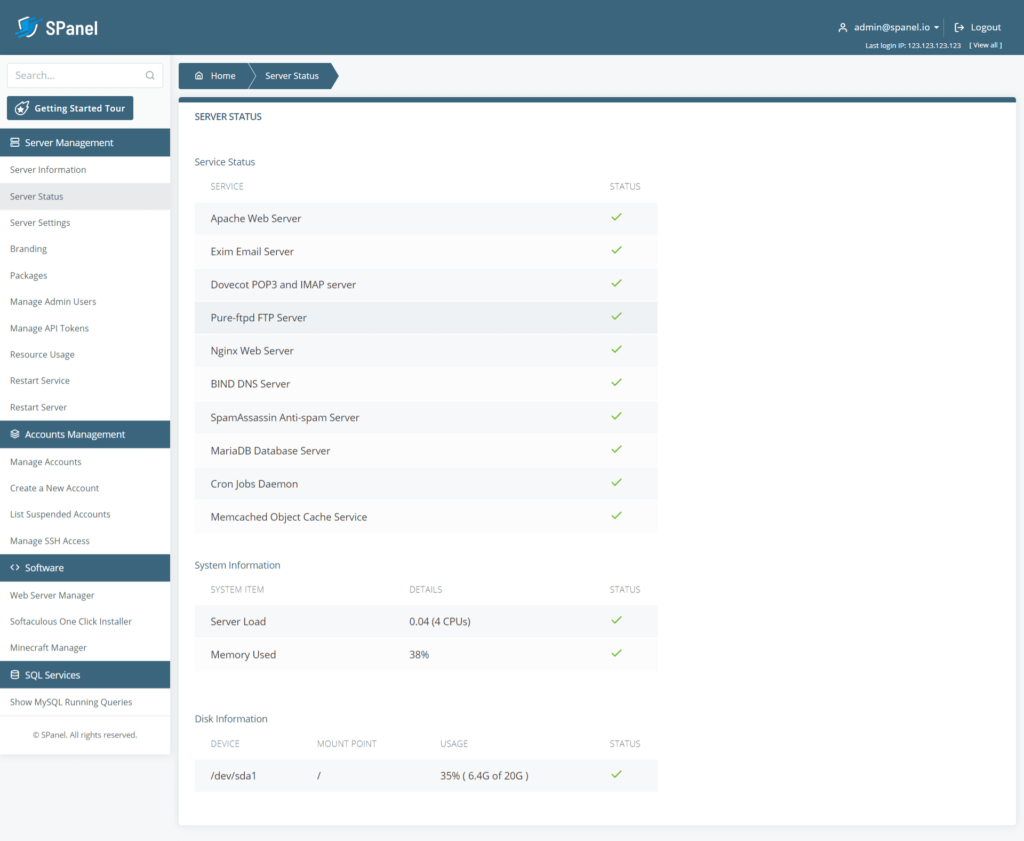
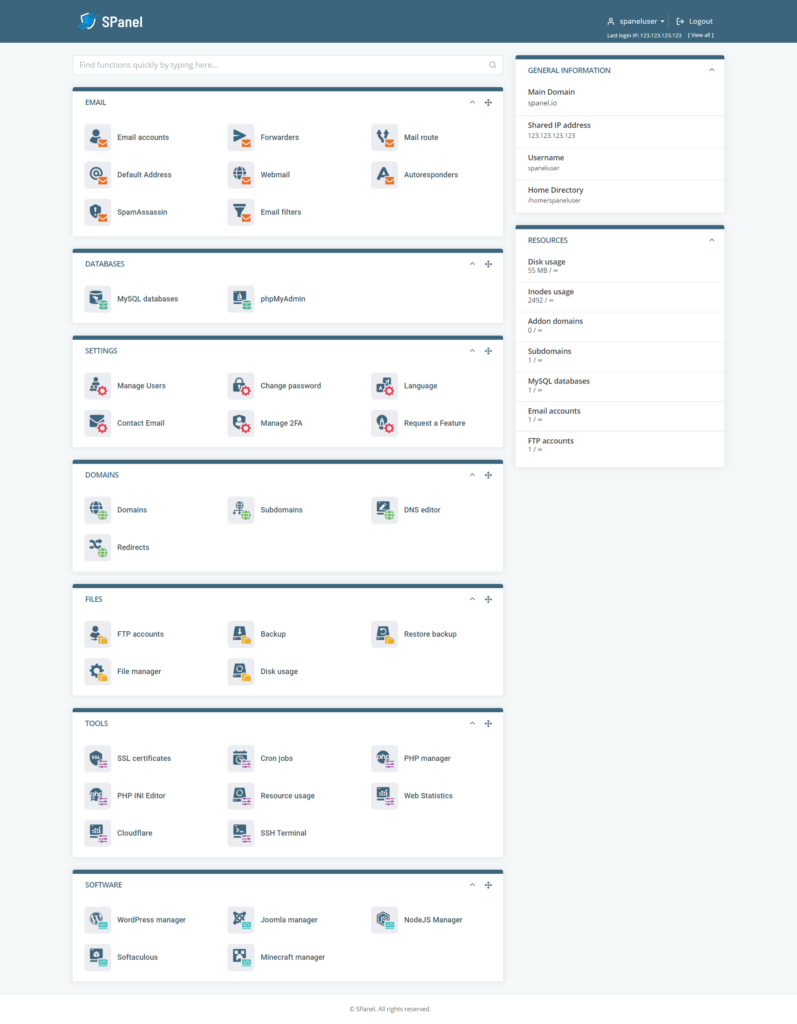
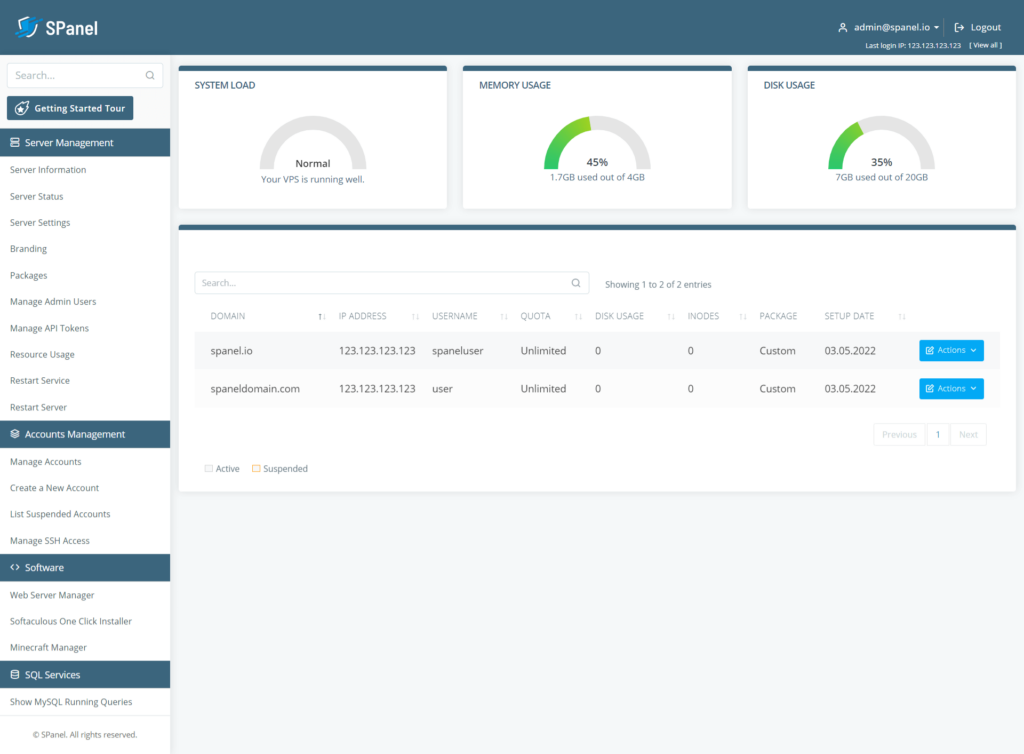
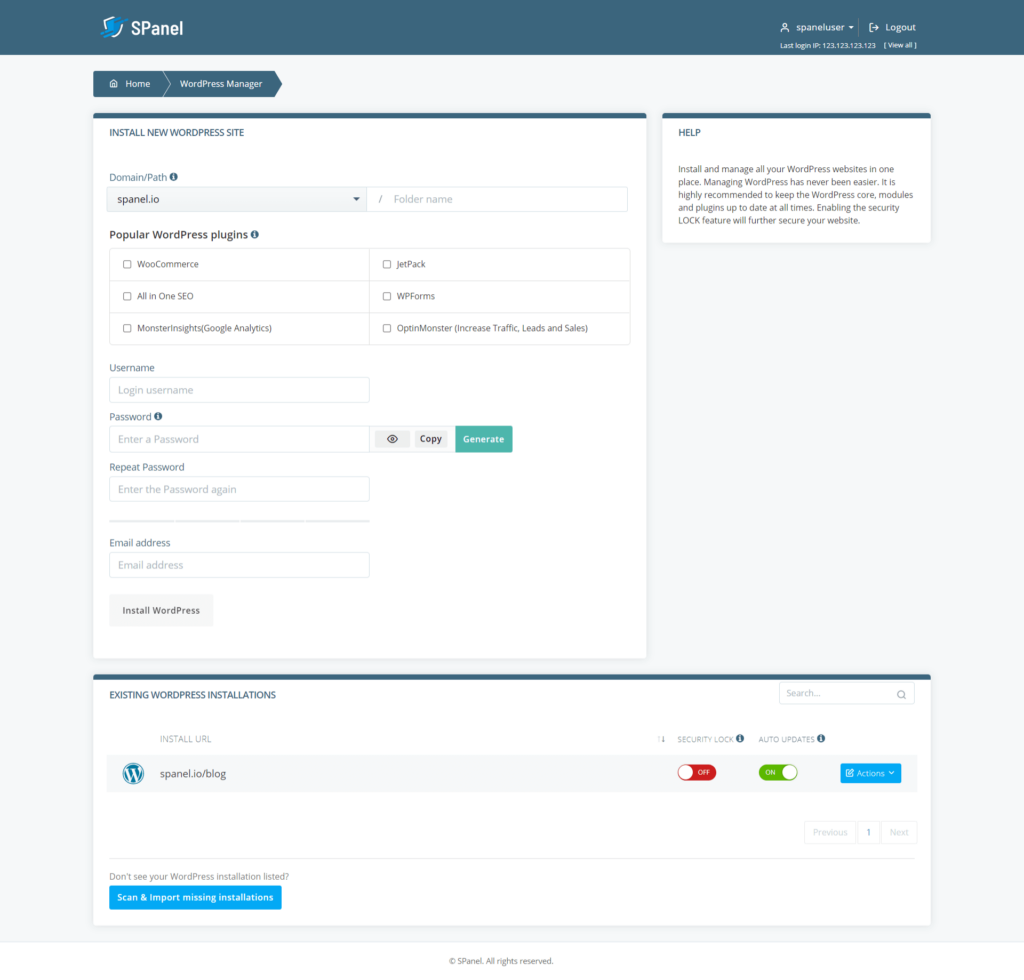
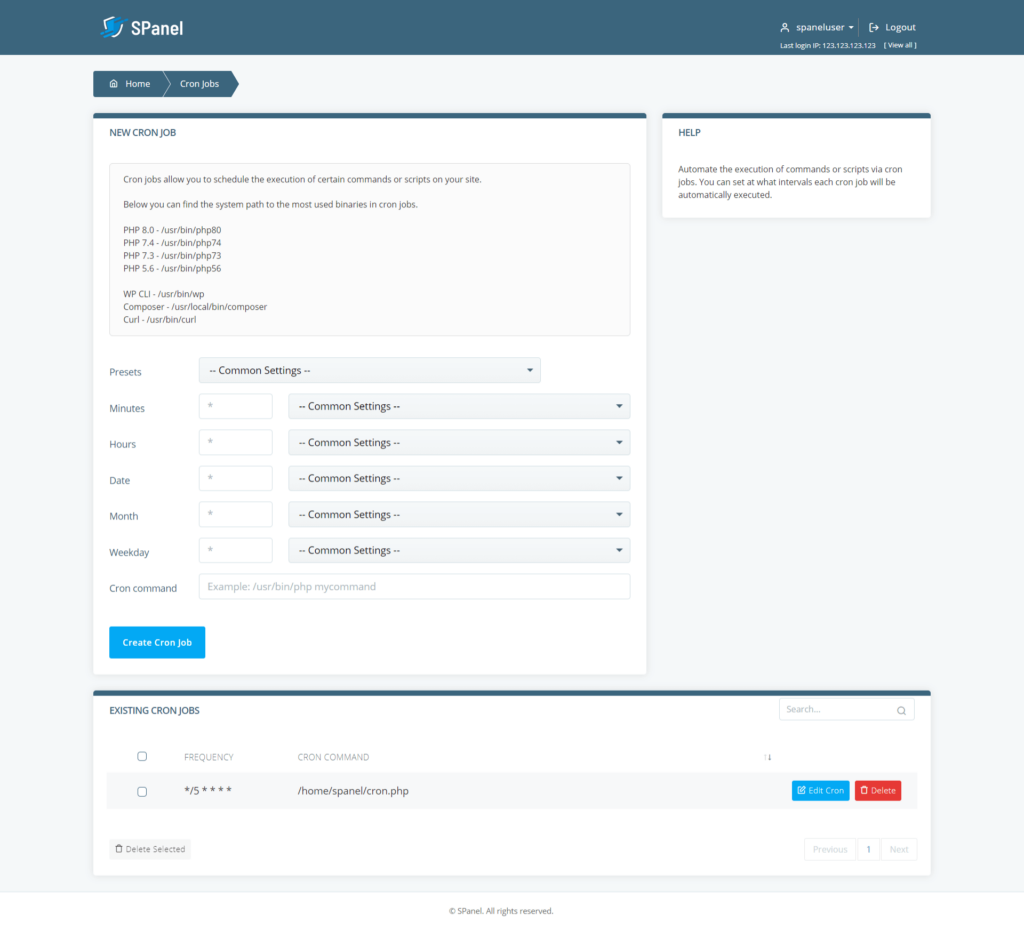
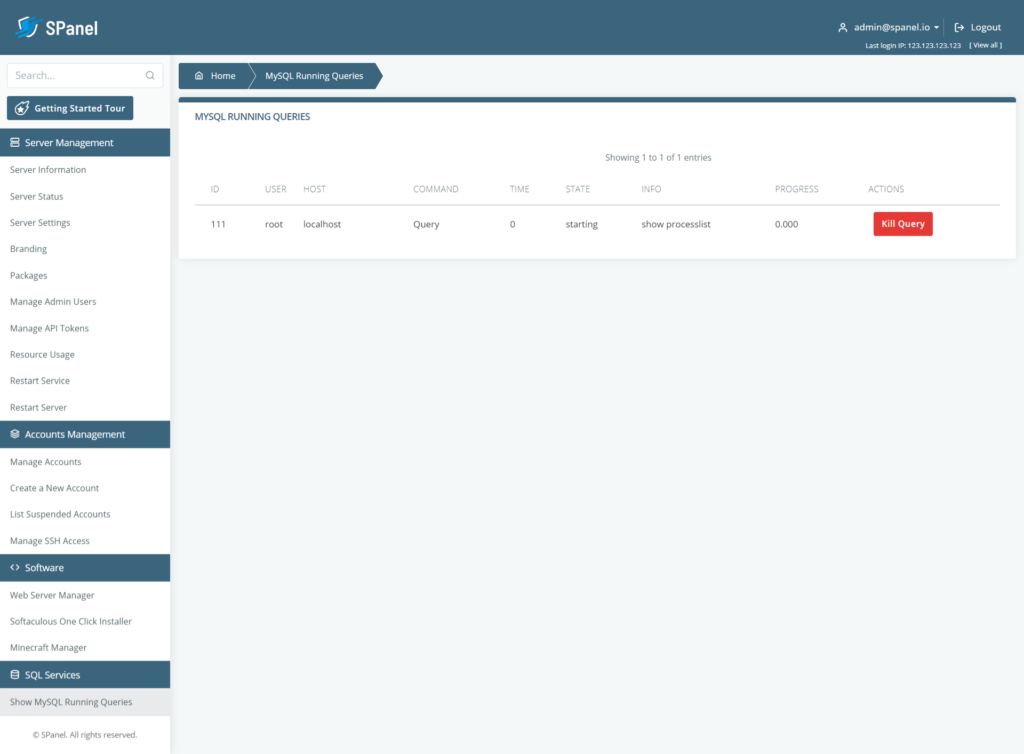
A democratic approach to customer requests
Much of SPanel’s appeal is down to its immense flexibility, but there is also a very human element to its setup. This extends to the level of customer feedback.
Scala’s control panel is part of the so-called Cloud Democracy Project that gives users a direct voice in the way the product is developed. Many vendors will talk about listening to customers, but the SPanel Team actually does that.
What does that mean? Visitors can not only propose new features but vote on any different suggestions as well. Whichever feature gets the most votes, the host makes sure to include it in one of its next product updates. This way, ScalaHosting actively partners up with its clients and vouches to constantly improve SPanel with their help.
Final takes
We saw during the pandemic how the online ecosystem could change, so business owners need to be able to not only achieve a strong online presence but manage it effectively as well. The hosting vendors that offer the greatest level of flexibility in doing this will always be rewarded. If you are looking for a reliable and client-centric host, ScalaHosting is ticking all the boxes to ensure that all its customers are getting what they want and will continue to do so.
If you’d like to learn more about the company’s story, product features, pricing and more, you can read our ScalaHosting company profile in our TechDirectory.
NEXT UP

Tammas Ryan, Head of Customer Service at Edrolo: “The disruption caused by AI is likely to impact offshore customer service operations”
We interview Tammas Ryan, Head of Customer Service at Edrolo, a company providing teaching resources for teachers in Australia

Terminator 2 in 2024: liquid metal and soft robots are here today
Metals which stay fluid at room temperature aren’t a science fiction invention. In this T2 revisit, we explore liquid metal and soft robots.

Oracle to expand cloud and AI footprint in Japan with $8 billion investment
Oracle has announced that it will invest more than $8 billion over the next decade in cloud computing and AI in Japan.
